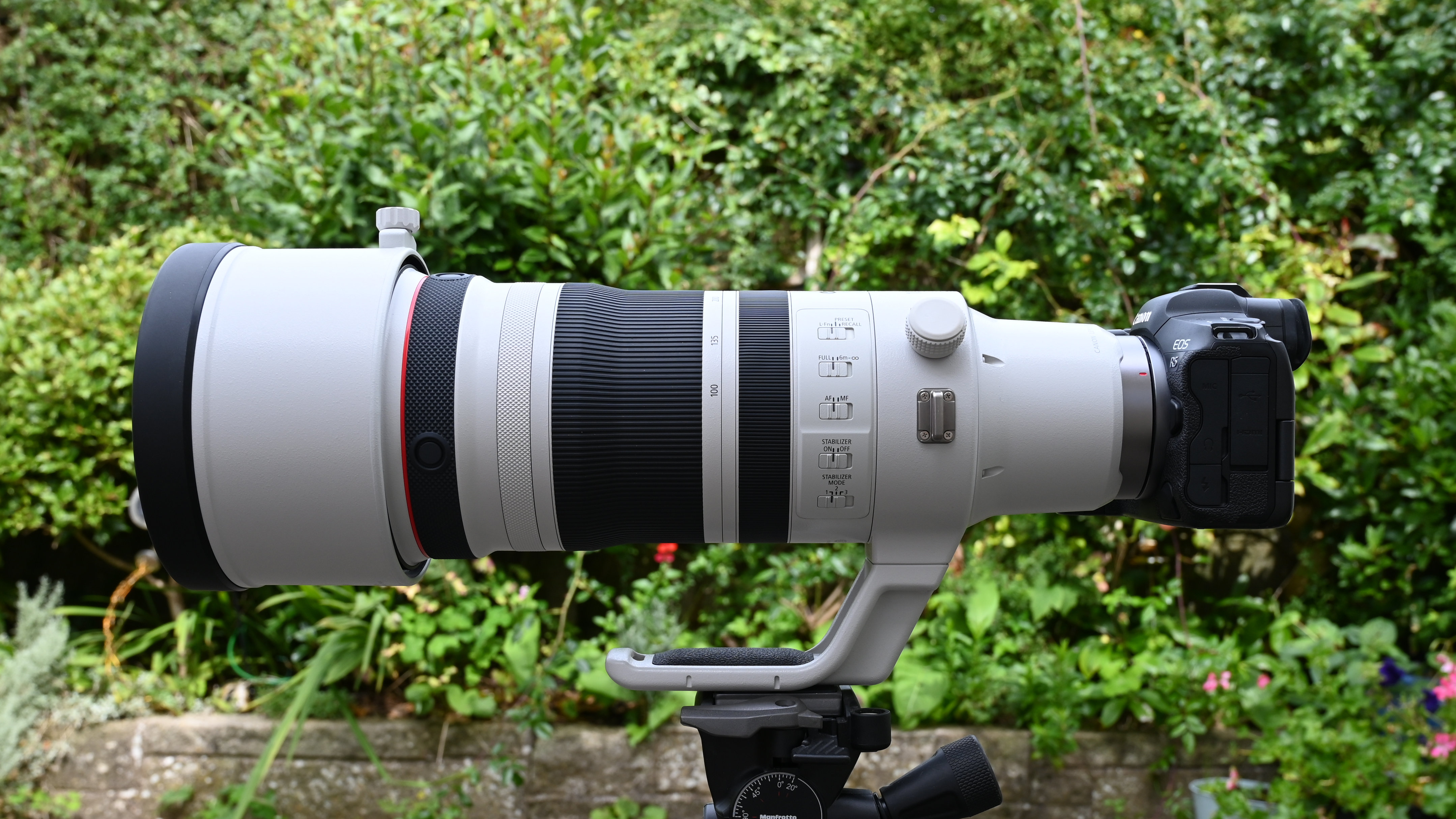
The Canon RF 100-300mm F2.8L IS USM is a telephoto extension to Canon’s RF 15-35mm F2.8L IS USM, RF 24-70mm F2.8L IS USM and RF 70-200mm F2.8L IS USM ‘trinity’ zoom lenses. We’re very much accustomed to trinity wide-angle, standard and telephoto lenses, which maintain a maximum f/2.8 aperture throughout their zoom ranges, from all major camera manufacturers but this lens is more like a D’Artagnan to Canon’s existing Three RF Musketeers.
There’s not been anything quite like this lens before, at least not from Canon. There was a relatively tiny, low-budget Canon EF 100-300mm f/4.5-5.6 USM hailing from the 35mm film era but that had a slower, variable aperture, lacked image stabilization and definitely didn’t class as an L-series lens. The RF lens is more akin to the Canon EF 300mm f/2.8L IS USM prime, but with the added versatility of being a zoom, and billed as having ‘prime lens’ performance and image quality. Both of the EF lenses have since been discontinued.
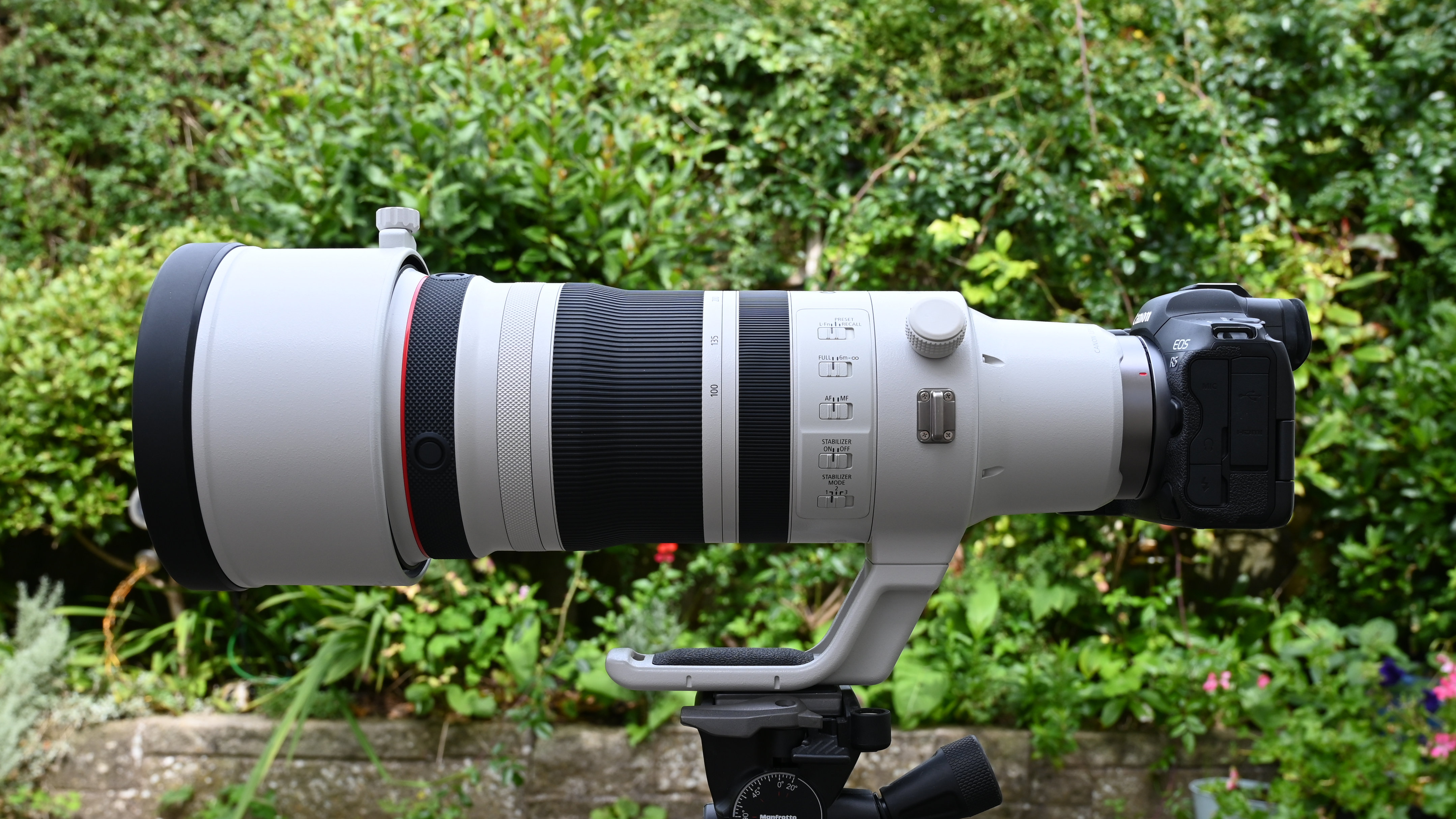
However, the RF 100-300mm isn’t without precedent. Designed for Canon and Nikon DSLRs, the Sigma 120-300mm F2.8 DG OS HSM | Sports gave a similar zoom range with the same fast and constant f/2.8 aperture rating, and at only around a quarter of the price. That lens is now also obsolete. In the own-brand Nikon camp, the Nikon AF-S 120-300mm f/2.8E FL ED SR VR is still available, at a similar price to the new Canon lens.
Specifications
Mount: Canon RF
Full frame: Yes
Image stabilization: Yes
Autofocus: Yes
Lens construction: 23 elements in 18 groups
Angle of view: 24-8.25 degrees
Diaphragm blades: 9
Minimum aperture: f/22
Minimum focusing distance: 1.8m (all focal lengths)
Maximum magnification ratio: 0.16x
Filter size: 112mm
Dimensions: 128x323.4mm
Weight: 2,590g
Key features
The standout features of this lens are its powerful 100-300mm telephoto zoom range coupled with a fast and constant f/2.8 aperture. Advantages include strong telephoto reach with the ability to freeze movement by maintaining fast shutter speeds even under very low lighting conditions, and the availability of a tight depth of field.
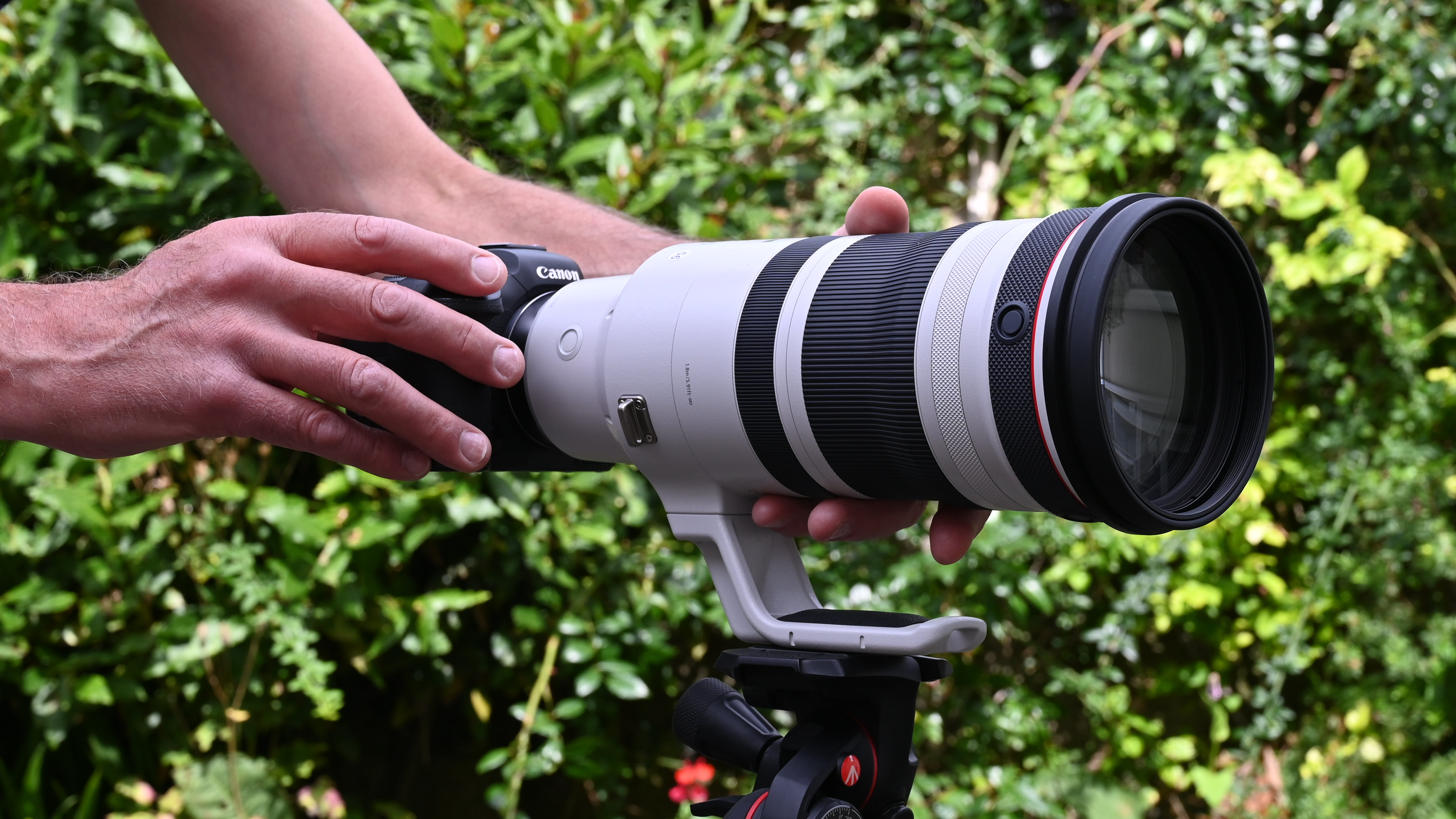
Going further, this is a seriously pro-grade lens, with an exhaustive list of high-end features. Autofocus is courtesy of dual Nano USM motors, which drive two groups of focusing elements individually, aiming for speed and consistent accuracy. To beat the shakes, there’s a 5.5-stop optical image stabilizer, the performance of which is boosted to 6-stop efficiency with EOS R-system cameras that have in-body stabilization. Moreover, the stabilizer has three switchable modes, for static and panning shots, plus an exposure-only mode for easier tracking of erratically moving objects.
The optical design includes 23 elements in 18 groups, boasting no less than four UD (Ultra-low Dispersion) elements and, unusually for a telephoto lens, a glass molded aspherical element. There’s also one fluorite element, aiming to boost optical quality while reducing the overall weight of the lens. All in all, the advanced design seeks to deliver optimum sharpness, clarity, contrast and color rendition with minimal aberrations.
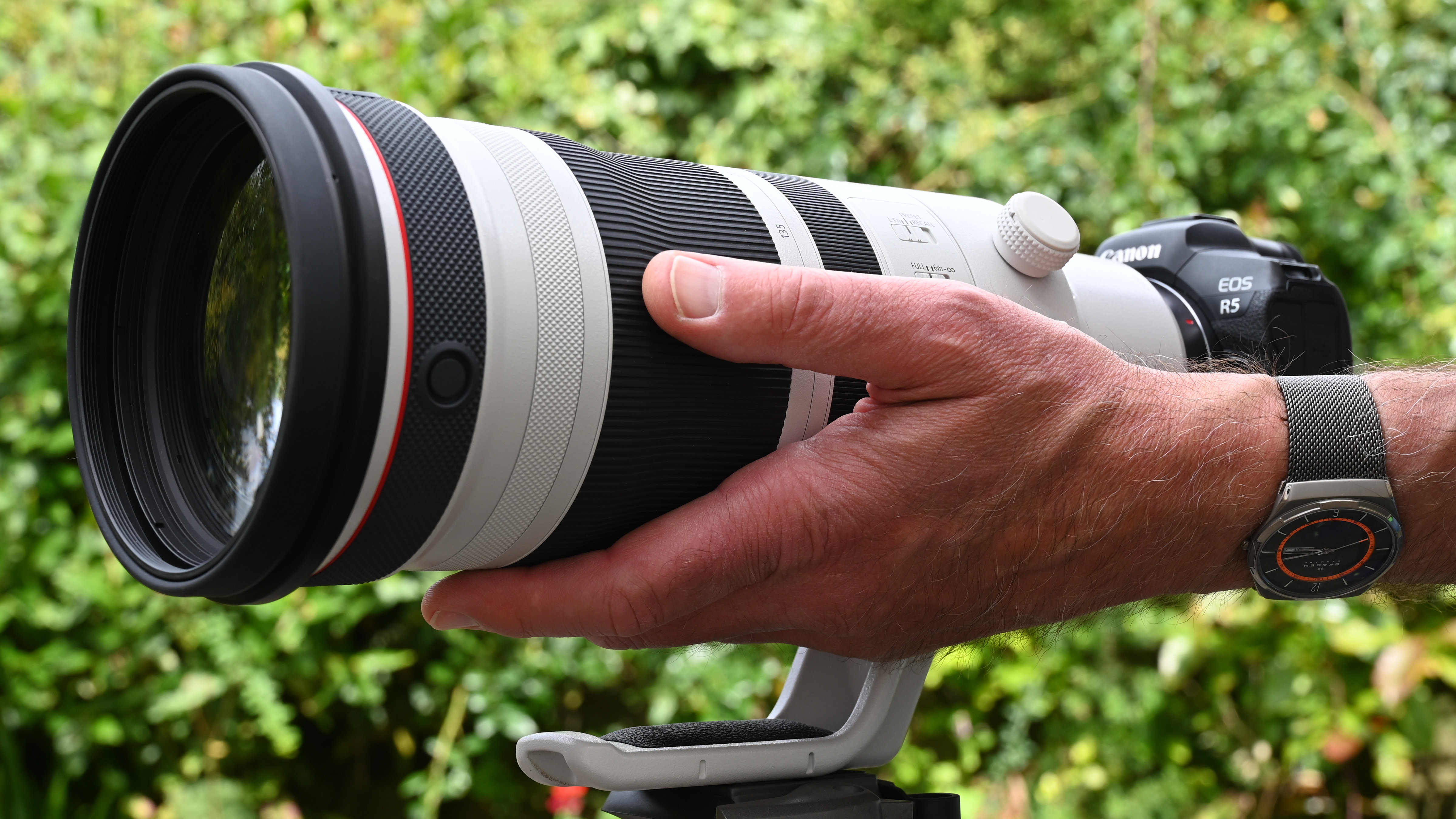
Canon’s trusty Super Spectra coating is on hand to minimize ghosting and flare, as well as the more high-tech ASC (Air-Sphere Coating). As you’d expect with a lens that weighs in at around 2.5kg, it’s supplied complete with a tripod mounting ring, which has click steps at 45-degree increments. The ring isn’t removeable but you can detach the mounting foot, which is held in place with four Allen screws. Other kit that’s supplied as standard includes a circular-profile hood and a fitted soft case that has a grab handle plus an adjustable shoulder strap.
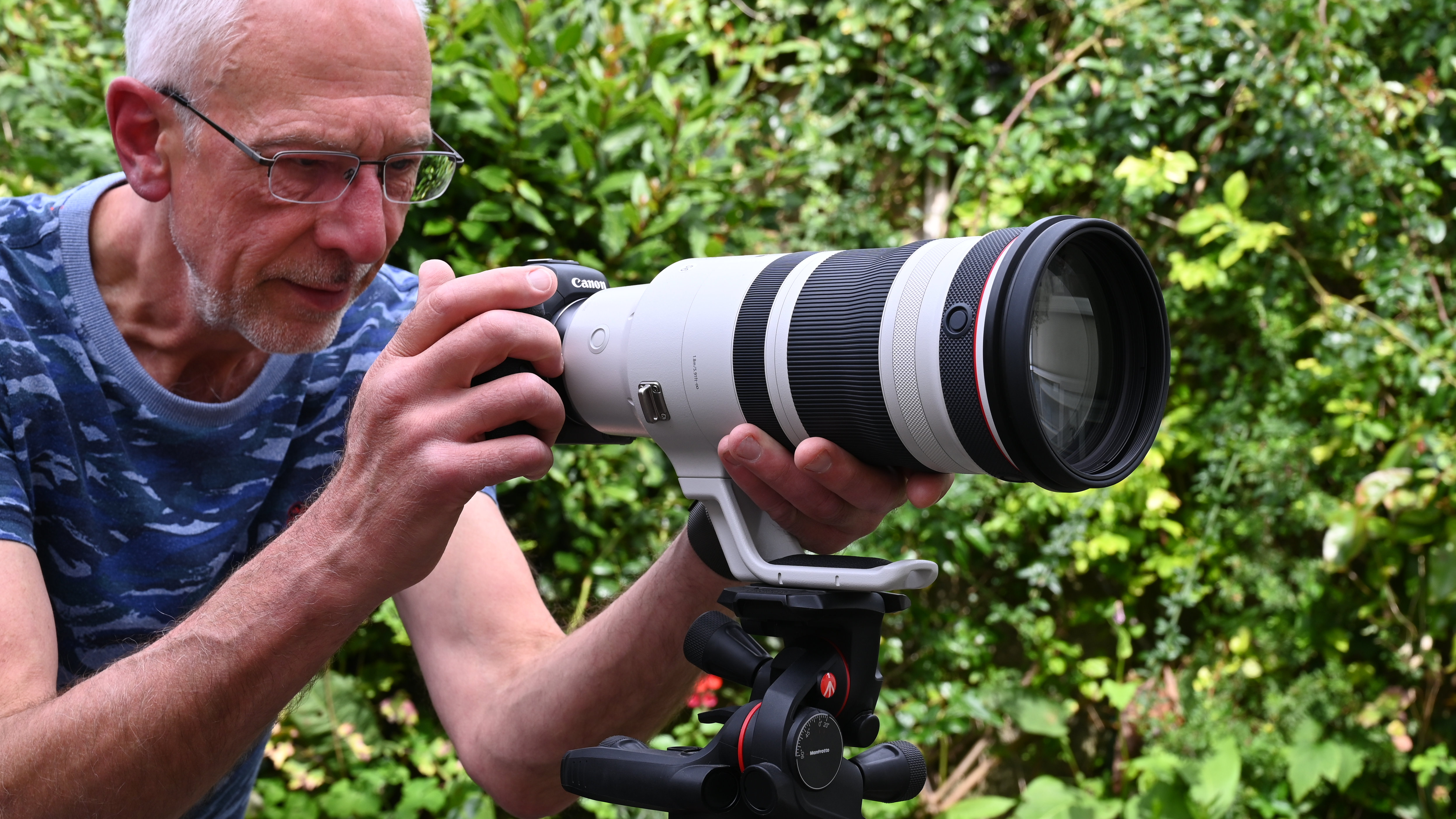
The lens is compatible with Canon’s 1.4x and 2.0x RF tele-converters, or ‘extenders’, boosting the zoom range to 140-420mm or 200-600mm, with the usual 1-stop or 2-stop narrowing of aperture width.
Build and handling
Build quality is everything you’d hope for in a premium lens that has such a hefty price tag. The construction feels rock-solid construction and includes an extensive set of weather-seals. There’s also a fluorine coating on the front element to repel moisture and fingermarks, and to aid easy cleaning.
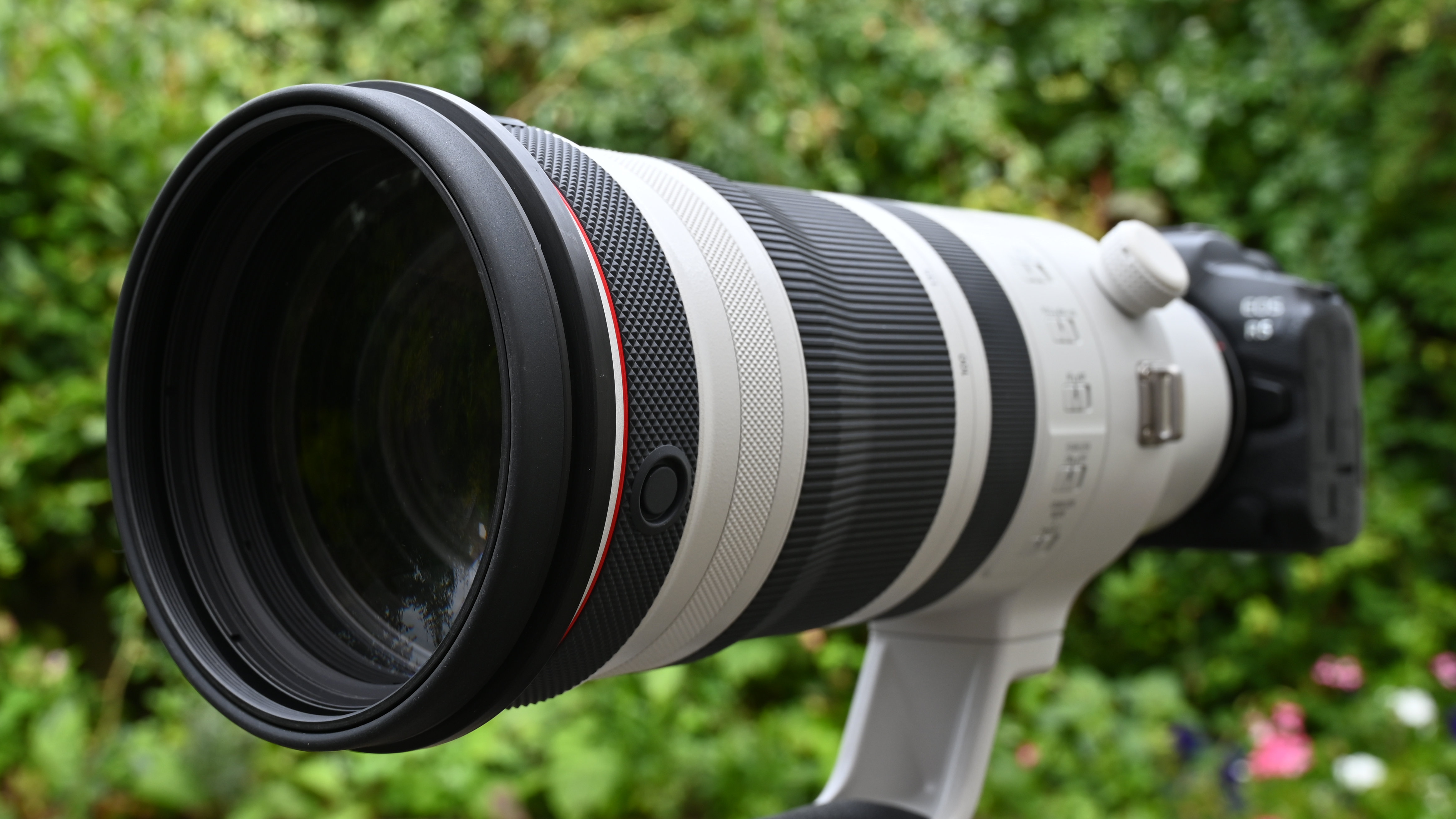
Handling benefits from a plentiful array of switches and control rings. Ther’s a rank of four customizable lens function buttons at the front, assigned to AF-Stop by default, just behind which sits a customizable control ring with click steps. Up top at the back left, there’s an L-fn switch with preset and recall positions, which operates in conjunction with a lens function/focus preset button on the opposite side. You can use these to preset a focus distance setting and recall it with the press of a button. Just below the L-fn switch is an autofocus range limiter switch, which can lock out the short end of the range between 1.8m and 6m. The minimum focus distance of 1.8m remains constant throughout the zoom range, enabling a maximum magnification ratio of 0.16x at the longest 300mm focal length.
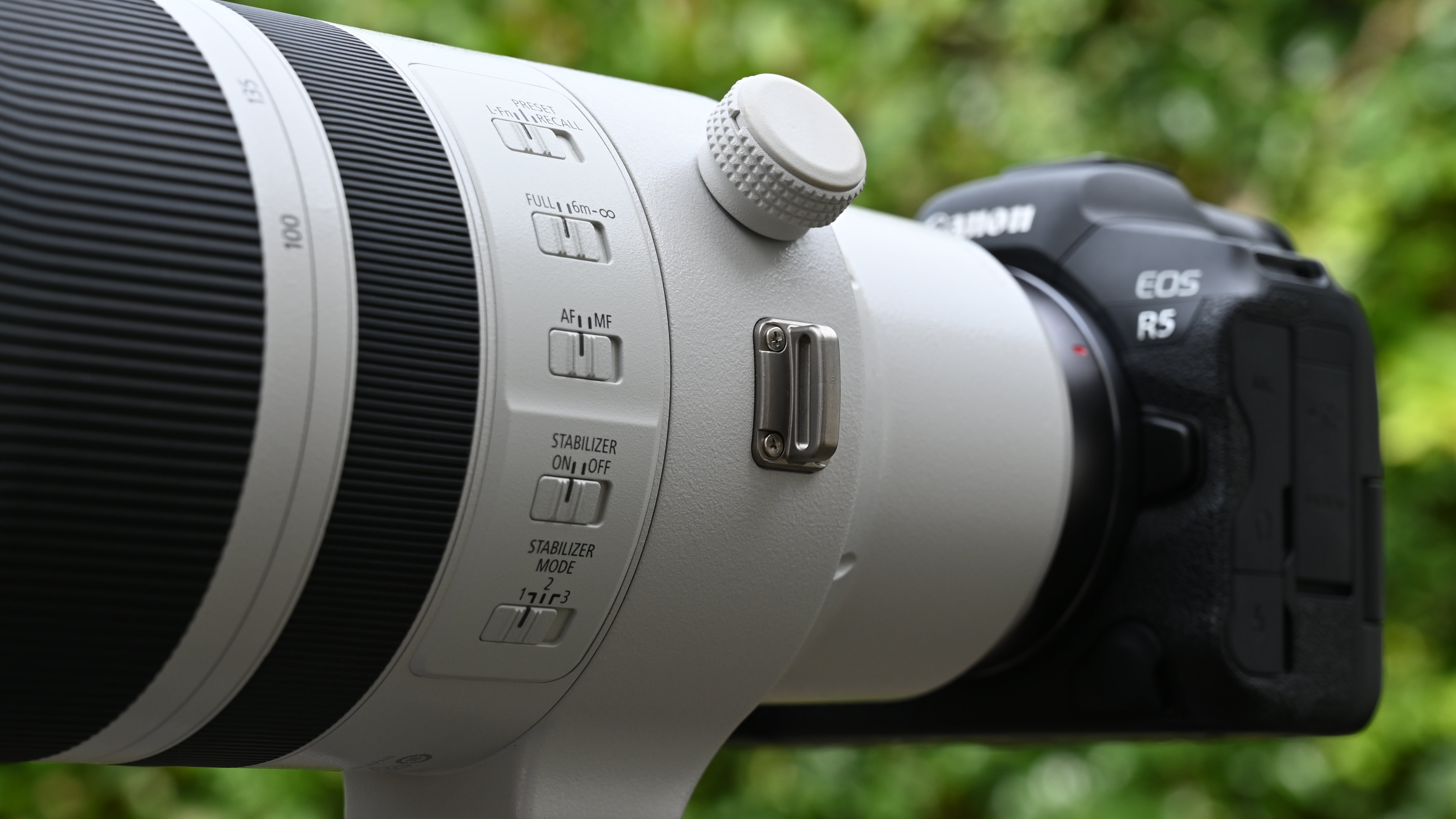
Next up is an AF/MF focus mode switch, full-time manual override of autofocus being available via the electronically coupled focus ring. Again, the action of the ring is customizable when in autofocus mode. The rear bank of switches finishes off with a stabilizer on/off switch and a three-position stabilizer mode switch.
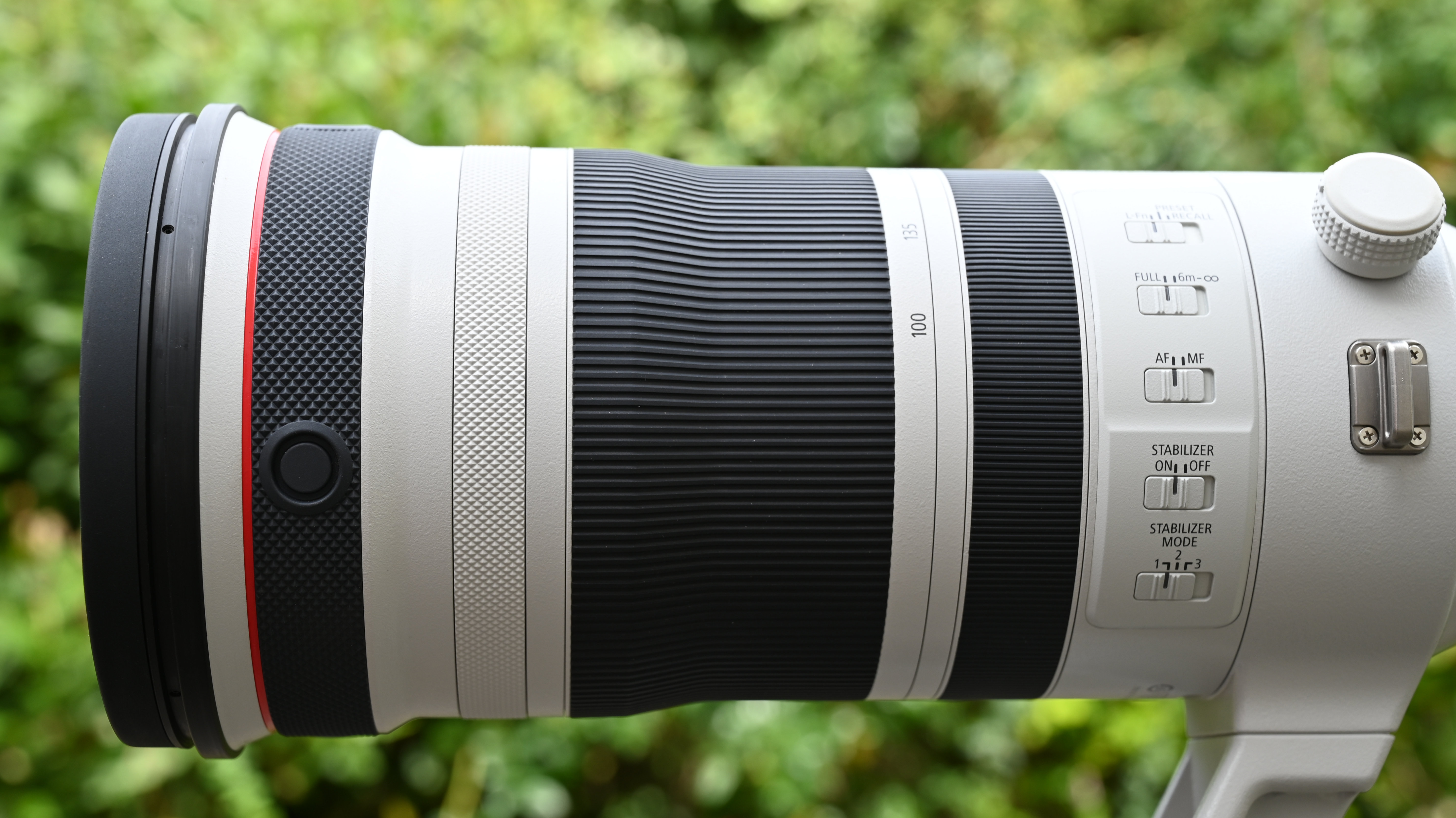
Like many constant-aperture telephoto zooms, but notably not the RF 70-200mm F2.8L IS USM, this lens has a fixed physical length, so there’s no extending inner barrel as you stretch to longer zoom settings. That’s a handling bonus if you’re using a gimbal, as the lens retains virtually the same center of gravity at all focal lengths. It also helps to minimize the risk of the lens sucking in any dust or moisture as you zoom from the short to the long end of the range.
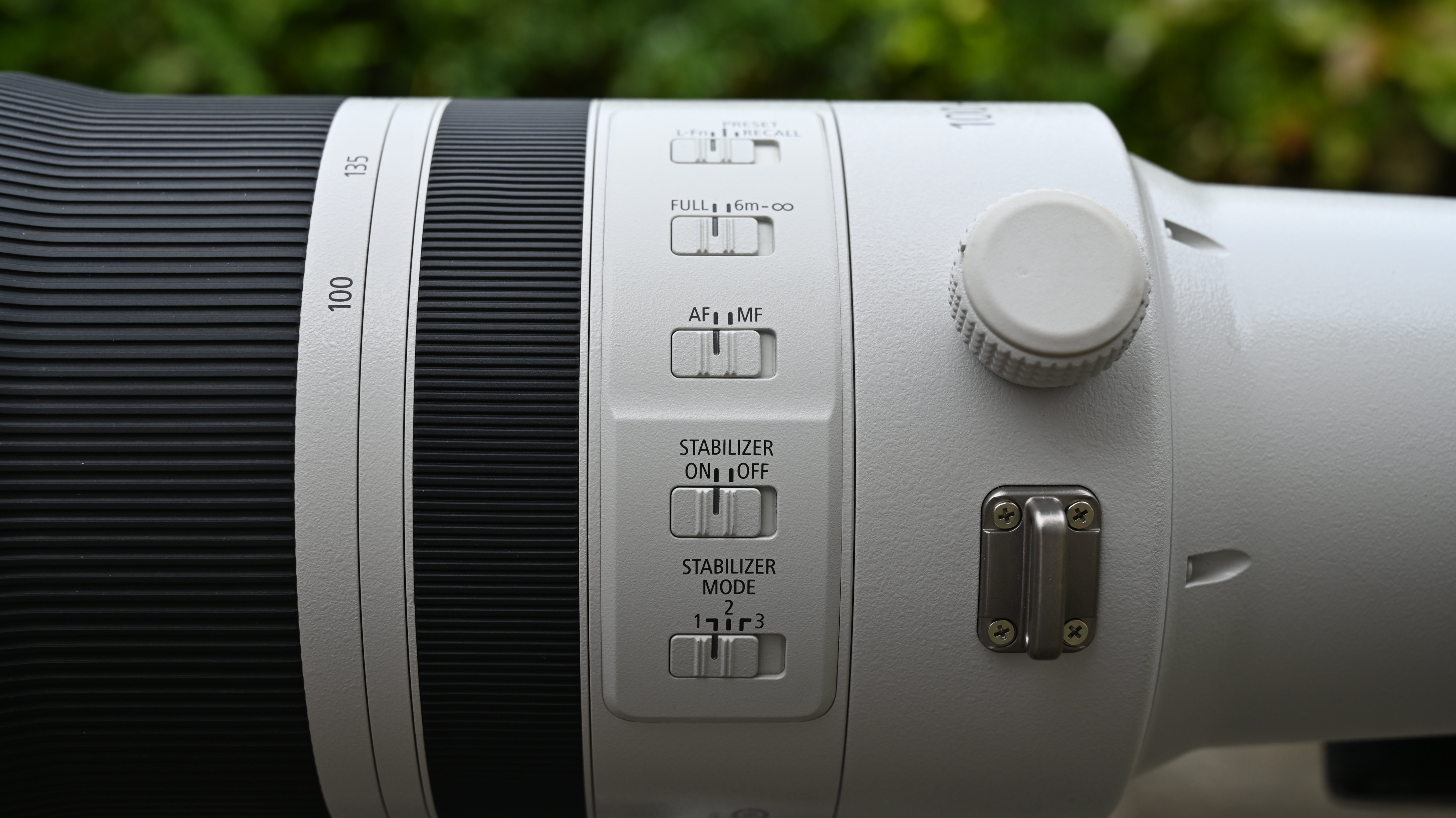
Two strap lugs are fixed to the lens, so you don’t have to put strain on the host camera body’s lens mount when you’re carrying it around.
Performance
In keeping with the asking price, performance is simply spectacular. Image quality is easily as good as most pro-grade prime lenses, if not better. Sharpness is scintillating throughout the entire zoom range, even when shooting wide-open at f/2.8. Equally importantly for many photographers, bokeh is deliciously smooth and dreamy. The widest aperture gives plenty of potential for gaining a really tight depth of field, especially towards the long end of the zoom range.
Color fringing can be a little noticeable towards the edges and corners of the image frame in the short half of the zoom range, but eases off at longer zoom settings. Even so, it’s easily within the remit of automatic in-camera correction, which delivers a complete fix. The same goes for the very small amounts of barrel and pincushion distortion, at the short and long ends of the zoom range respectively. Resistance to ghosting and flare is also very good, thanks in part to the dual Super Spectra and ASC coatings.
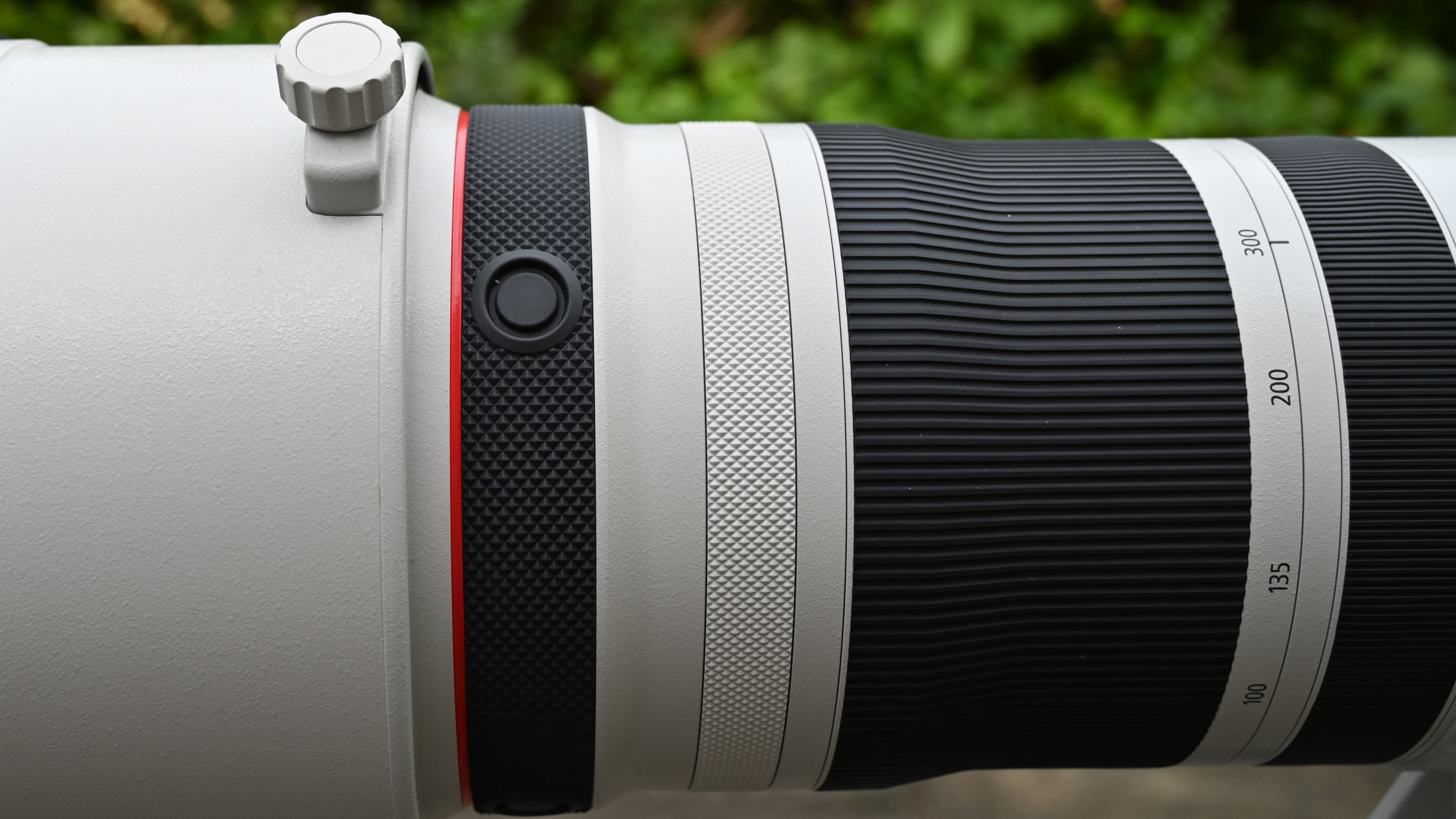
We love that that the lens has such lightning-quick autofocus. In our tests, using the lens with a Canon EOS R5, autofocus really snapped into place when shooting stills, and was very adept at tracking even fast-moving subject matter. For shooting movies, it gives nicely smooth transitions and is virtually silent in operation.
The cherry on the cake, in performance terms, is that the optical image stabilizer lives up to its 5.5-stop billing, with a slight boost to 6-stop effectiveness when used in conjunction with in-body stabilization, featured in most Canon EOS R-system cameras.
Sample images











Lab results
We run a range of lab tests under controlled conditions, using the Imatest Master testing suite. Photos of test charts are taken across the range of apertures and zooms (where available), then analyzed for sharpness, distortion and chromatic aberrations.
We use Imatest SFR (spatial frequency response) charts and analysis software to plot lens resolution at the center of the image frame, corners and mid-point distances, across the range of aperture settings and, with zoom lenses, at four different focal lengths. The tests also measure distortion and color fringing (chromatic aberration).
Sharpness:
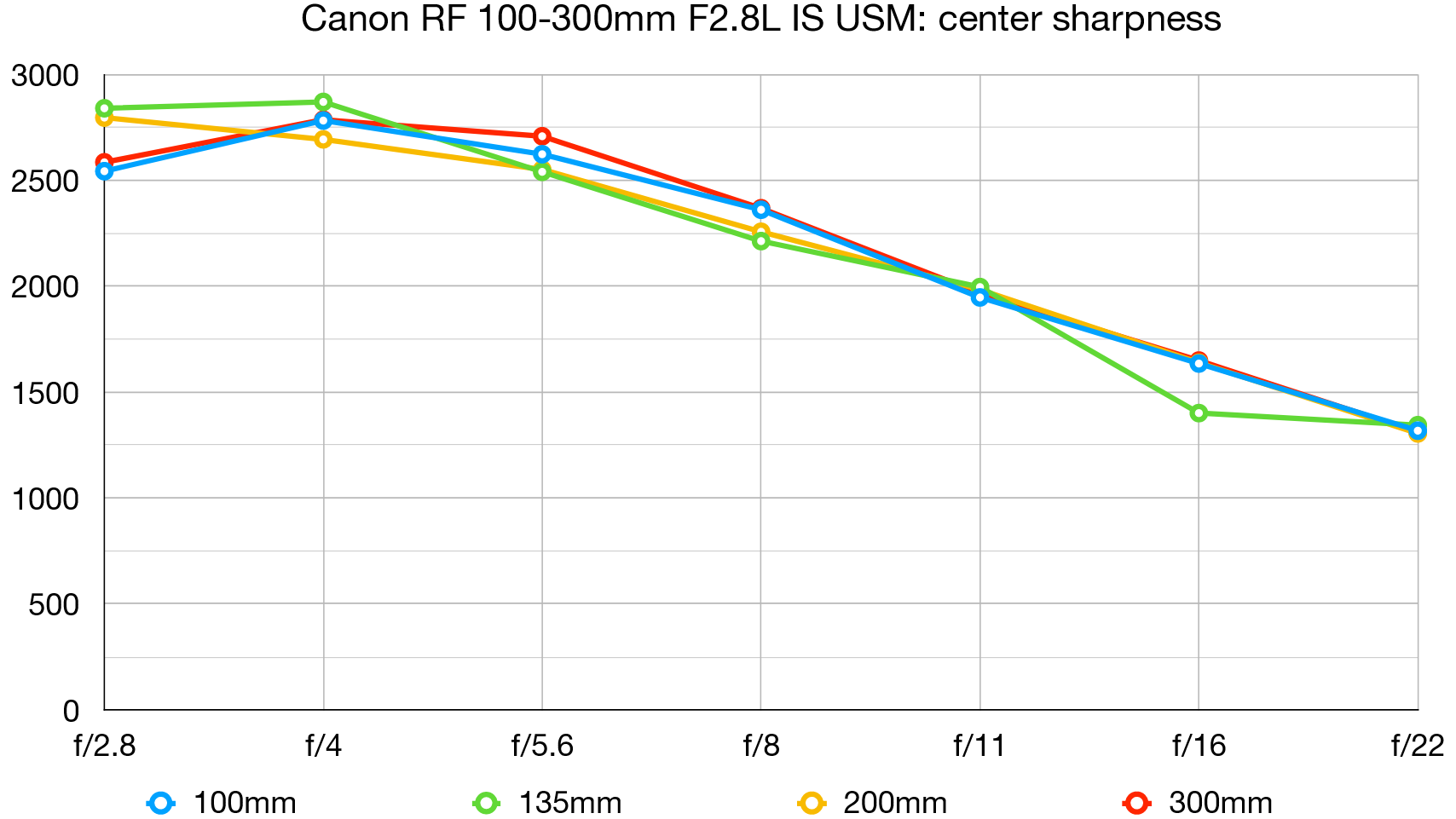
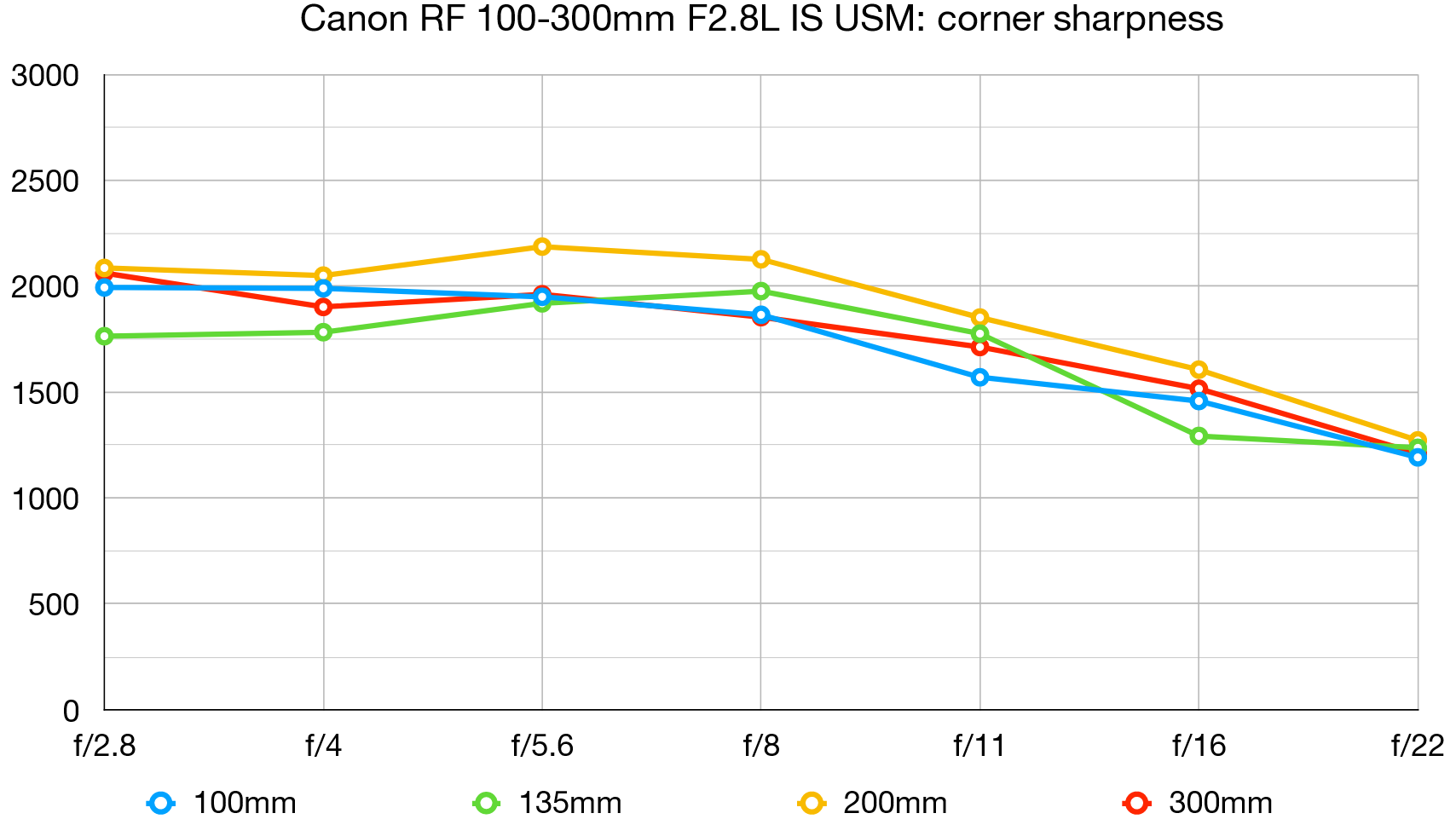
This lens is supremely sharp. Better still, scintillating levels of sharpness are maintained throughout the entire zoom range, from the center of the image frame right out to the extreme corners, even when shooting wide-open at f/2.8.
Fringing:
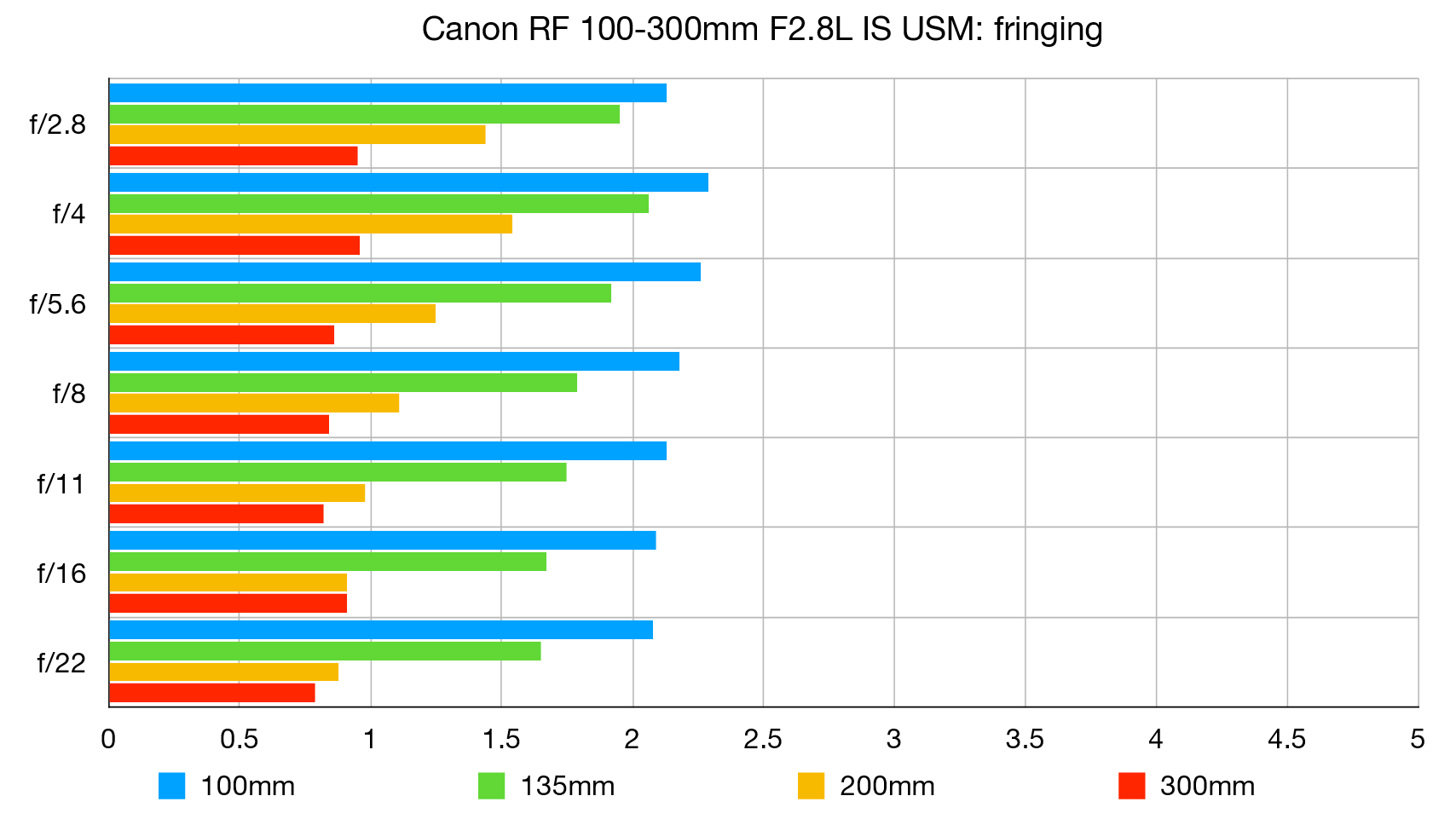
Color fringing can be a little noticeable towards the edges and corners of the image frame at the short end of the zoom range, gradually becoming less as you extend through towards 300mm. Even so, it’s of a low order and easily taken care of by automatic in-camera correction.
Distortion:
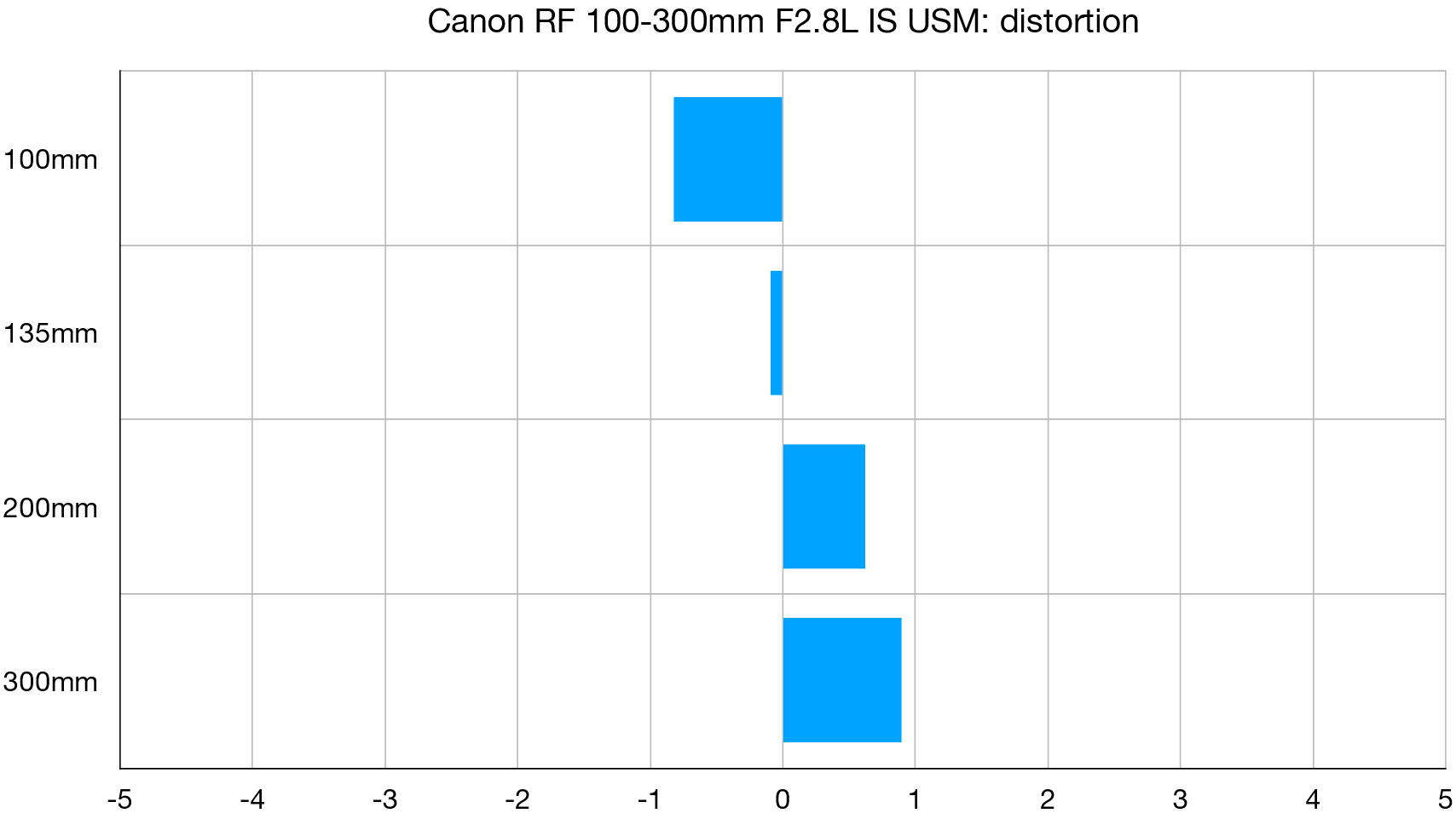
There’s a slight hint of barrel distortion at 100mm, virtually no distortion at the 135mm mark, and minimal pincushion in the 200-300mm sector of the zoom range. It’s generally unnoticeable in real-world shooting, even with automatic in-camera correction disabled.
Verdict
Sometimes a 70-200mm f/2.8 zoom just doesn’t cover the distance. This lens gives extended telephoto reach with no reduction in aperture, along with super-speedy autofocus and highly effective optical image stabilization. It’s ideal for action, sports and wildlife photography, as well as for portraiture when you want to keep a discrete distance. All in all, it’s tremendously versatile. Image quality is to die for, more like you’d expect from a collection of top-notch primes. The versatility and performance come at a price though. It’s very expensive to buy and weighs in at more than 2.5kg.
Read more:
• Best camera lenses to get
• Best Canon lenses
• Best Nikon lenses
• Best Sony lenses







